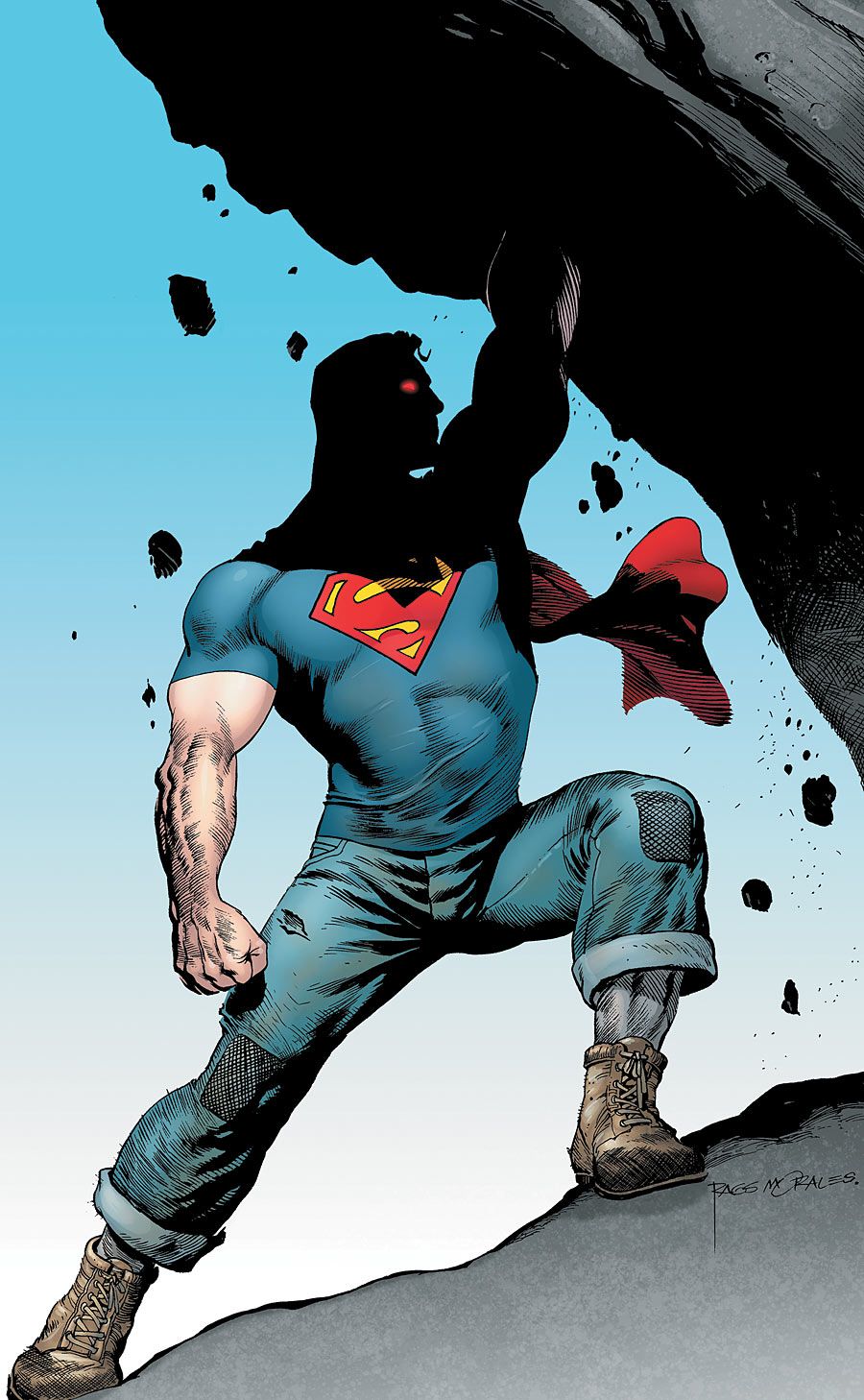If "All-Star Superman" was Grant Morrison's attempt to distill everything that made the Silver Age Superman great, it's quickly clear that "Action Comics #1" is his attempt to do the same for the Golden Age version of the character.
Set shortly after the start of Superman's career (making, by extension, the earliest, chronologically, of the "New 52" so far) "Action Comics" #1 retains the 1930s/1940s feel of the original, despite its thoroughly modern elements. The much-discussed "working class" elements of the character are in full force, and the character's ideals seem at once simplistic and modern. With the world suffering from a severe recession (as it was when he first appeared) it makes a sort of sense for Superman to be taking the world of business to task, even if - at the moment - it looks like the answers he's come up with are a tad simplistic. As a farm boy who's moved to the city, it's no surprise that he sees the businessmen as the biggest crooks around.
Much of the entertainment value in the issue, however, isn't from seeing this new, idealistic superhero at work, but in seeing Grant Morrison re-interpret the Superman mythos through the lens of the New 52. Clark Kent is introduced, a struggling journalist substantially less established and sure of himself than he is as Superman. Jimmy and Lois are there, re-cast into slightly different roles, so that we might watch the traditional Clark-Lois-Jimmy relationship evolve naturally. Luthor is of course present, but hiding behind the scenes, masking his fear and jealousy of Superman behind environmental reasoning -- a thoroughly scientific reaction, appropriate to the character.
However, Luthor's concerns, which one might immediately describe as modern, born from an environmental movement that didn't even exist the first time Superman appeared, are still given a depression-era feel, with Luthor using the 1935 introduction of cane toads to Australia as a reference point. It's almost surprising, in fact, that in a comic which literally has characters texting one another halfway through, things feel so very old-fashioned. Much of it is the imagery: tanks, trains, and skyscrapers, the marvels of the pre-silicon age and, of course, Superman's jeans and boots. But it's also the apparent innocence of Superman, and the blank slate on which he acts. There are no super villains for him to fight, just men in suits and uniforms, recalling a time when a bank robber was a threat worth Superman's attention.
Like any comic writer, Morrison is strongest when paired with a superior artist, and here, Rags Morales steps up to the challenge more than capably. Although not quite as Morrison-friendly as some of the writer's collaborators, Morales' presence appears to temper Morrison's excesses somewhat. The result is strong, well-executed superhero imagery and storytelling that flows effortlessly. Unlike so many Morrison books, you won't have to read a page twice to understand it, and much of that is down to Morales.
"Action Comics" #1, then, can only be called a complete success. If there's anything you can call a disappointment, it's that for Morrison's fans, it may be almost too conventional. Even so, as a first issue, as the start of Superman's career, it's hard to criticize. You might not like the idea of there being a second "Action Comics" #1 in the world, but having read this, it's tough to imagine a comic more worthy of the legacy.

